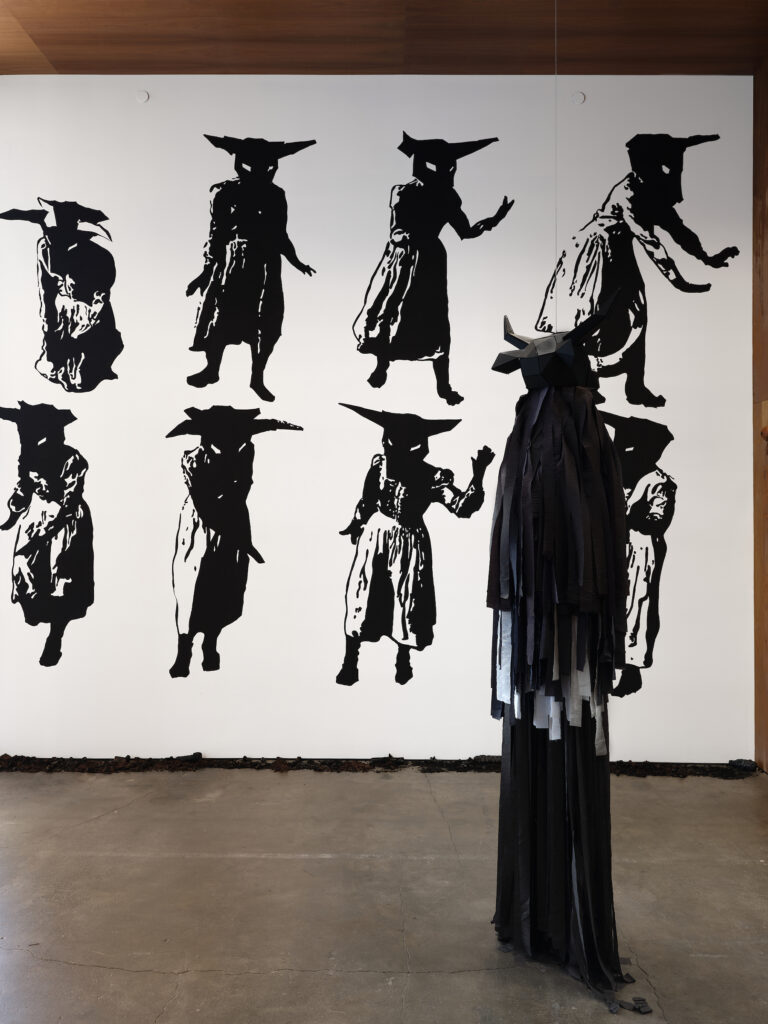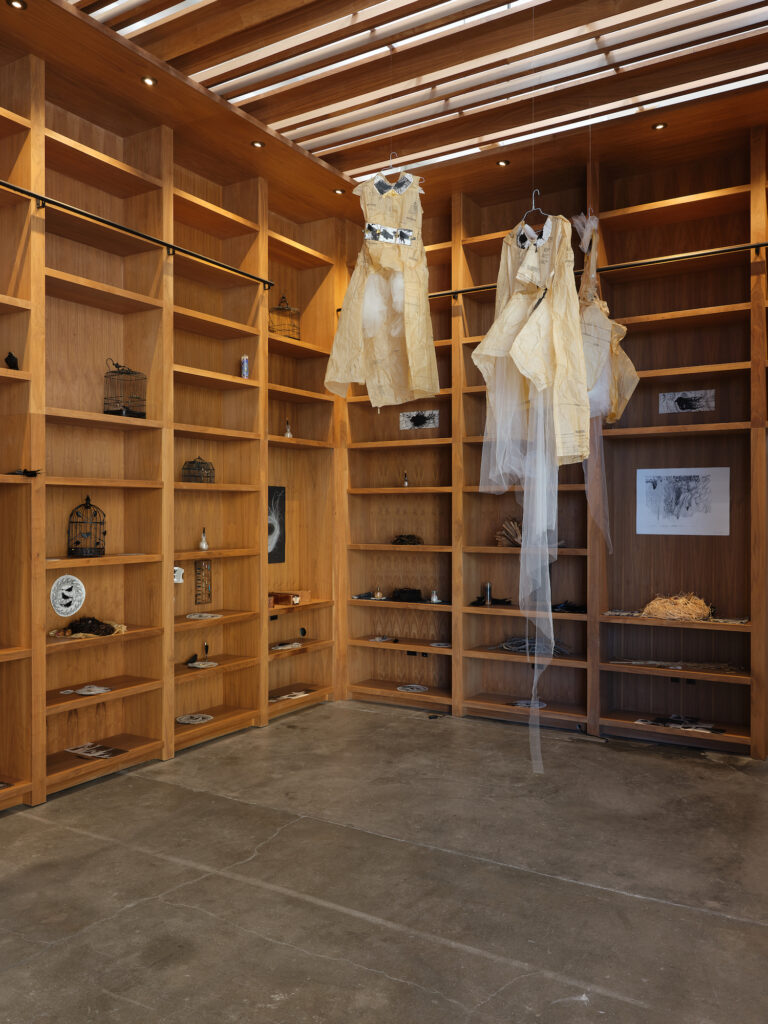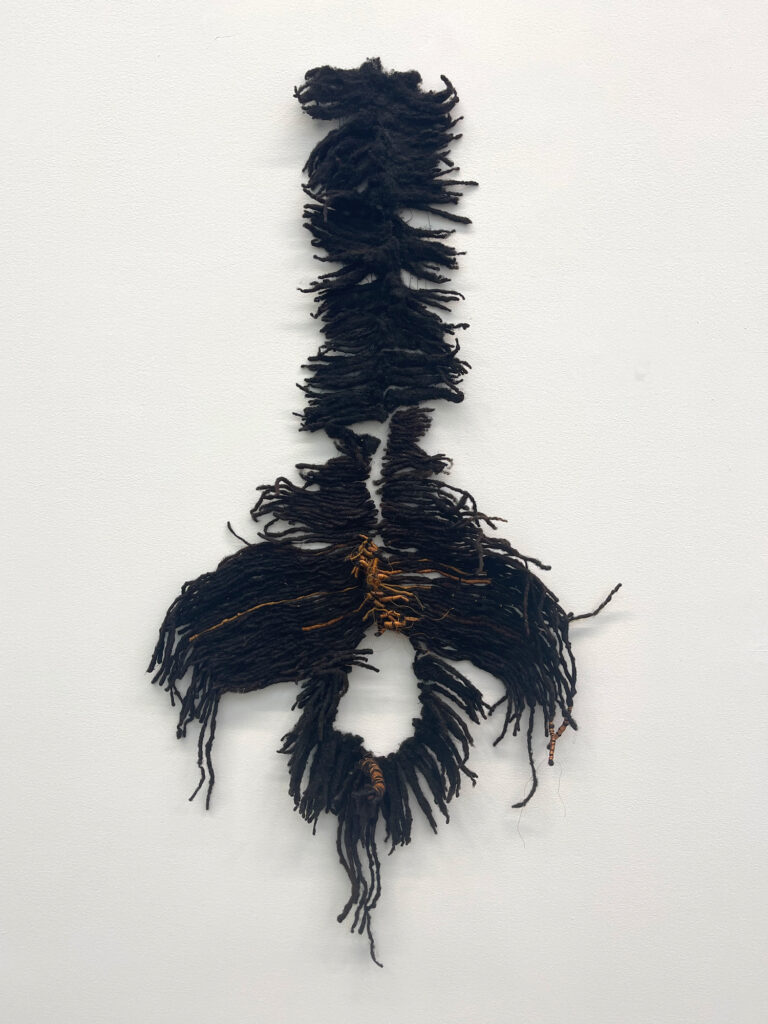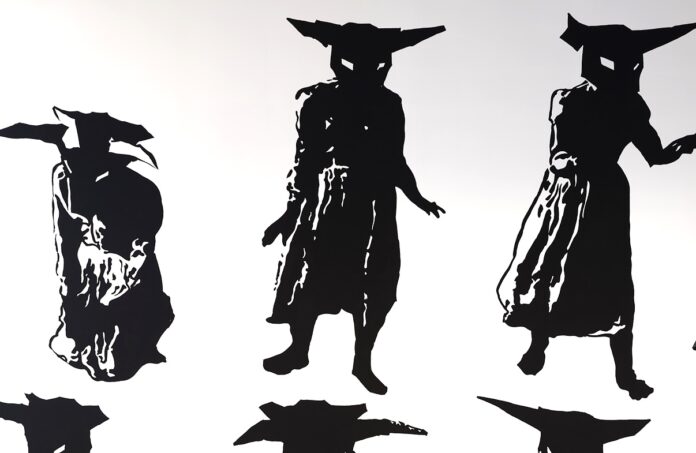As an antiseptic, essential mineral, flavor enhancer, and preservative, salt requires a mindfulness and balance in its usage. When portioned correctly, salt can clean and heal wounds, despite its sting. And yet, to “rub salt in the wound” is a malicious act. As salt is applied to injuries, it may induce pain, sometimes necessarily and sometimes spitefully.
With the evocatively titled exhibition “SALT to CATCH GHOSTS” at /(slash), Detroit- and Oakland-based independent curator Ashara Ekundayo presents textiles, photography, video, installation, and mixed media works to explore salt as a metaphor for healing, trauma, Black female/femme identification, and a cosmic order. Among many striking works, haunting installations by Shanequa Gay, Sabrina Nelson, and Adebunmi Gbadebo poignantly use black and white to address the movement between the natural world and humans, where we purify and conjure history and self.

Upon entering the gallery, visitors dramatically encounter Gay’s “the pepper throwing salt off in your game” (2021). Hung from the ceiling, an ominous black bull’s head cardboard mask stands guard. With strips of black crepe paper dangling below the mask, Gay alludes to a ritual robe and the verticality of a human form. Gay’s female minotaur evokes a transgression among the divine, human, and animal worlds. On the adjacent wall, Gay has stenciled black-and-white images of her minotaur in eight poses. With arms extended, the figure seems to be gesticulating, pledging, halting, bowing, praying, or pleading in an ambiguous, but highly suggestive narrative. Through Gay’s loose narrative, the artist evokes a mythical order, where there is a tension between piety, benevolence, punishment, and transformation.

Nearby Gay’s work, Nelson has installed “Why You Wanna Fly, Blackbird?” (2021) in the gallery’s built-in wood bookshelves. In many of the nooks the artist has placed feathers, braided and bundled human hair, blackbirds, bird’s nests, branches, and black-and-white linear drawings. With the sheer number of objects stowed in the bookshelves, Nelson enacts the flurry of activity when birds collect materials for nest-building, where birth, safety, rest, and home are established. As the arrangement resembles an alter or ritual, Nelson appears to be evoking or protecting the birds as a metaphor or talisman for self and community.

Adebunmi Gbadebo, ‘Magic Johnson has the cure to AIDS,’ 2017. Human locs and thread
Against the stark white walls in the main gallery, Gbadebo presents two works using black dreadlocks: “Dada” (2015) and “Magic Johnson has the cure to AIDS” (2017). In the former, a tall column of dreadlocks protrude from wall-like spikes, perhaps a spine; in the latter, Gbadebo transforms the hair into a biomorphic shape, where a strategically placed void suggests a vaginal opening or open mouth. With a traditional heritage that includes Massai warriors, Jamaican Rastafarians, and contemporary Black American culture, dreadlocks have been imbued with energy, where cutting them could be an exorcism, transformation, or release. Through hair, the artist invokes Black bodies, claiming the power to cast energy into the world.
As the artists use natural materials, they speak of a balance that extends beyond our knowable human history. Most poignantly, the curator has positioned Black women to control and direct energy, where self-healing and collective memory merge with histories, folklore, and magic. In speaking poetically and abstractly to unnamed ghosts, Gay, Nelson, and Gbadebo use the color black as a reference to self and community, cognizant of the pain, protection, and agency in metaphorical and magical transformations.
SALT TO CATCH GHOSTS runs through December 17 at /(slash), SF. More info here.





